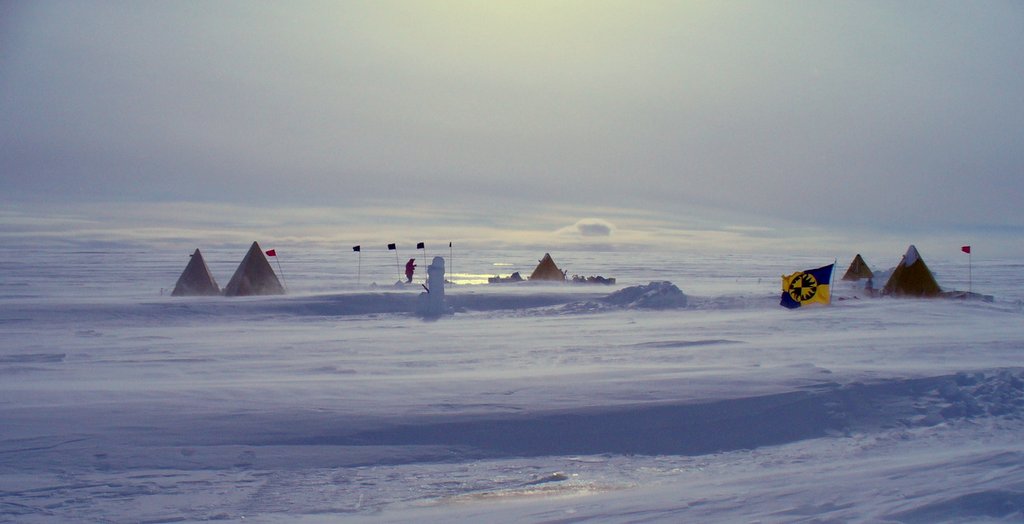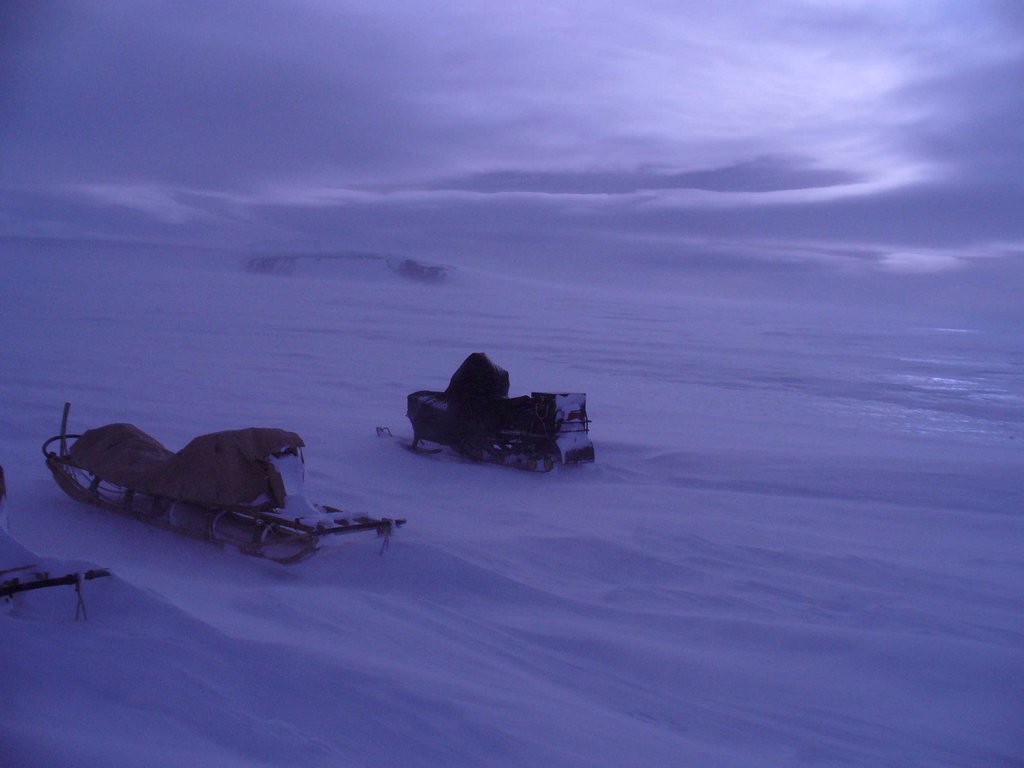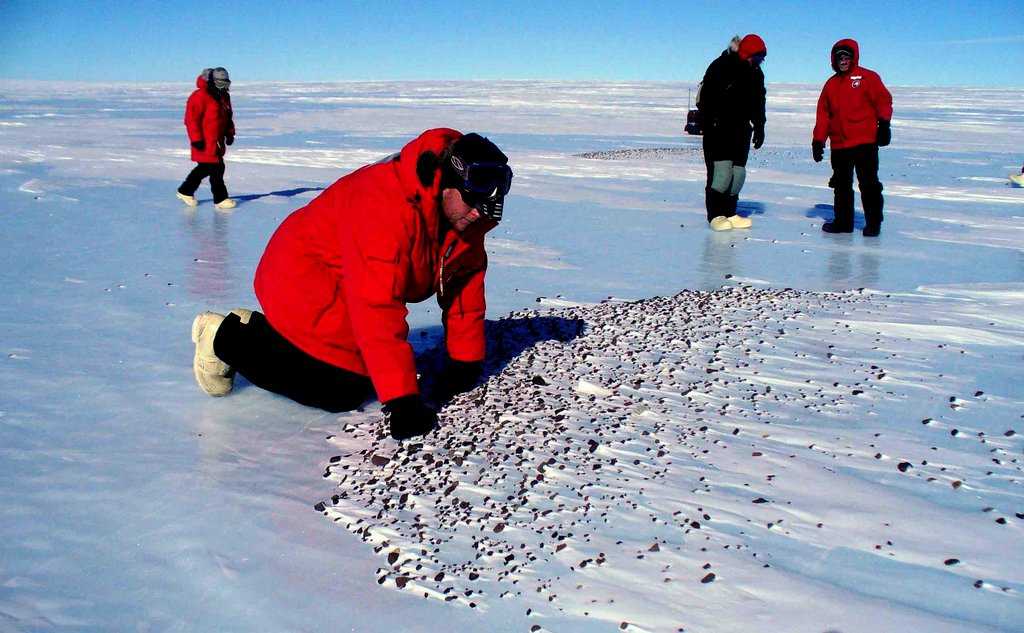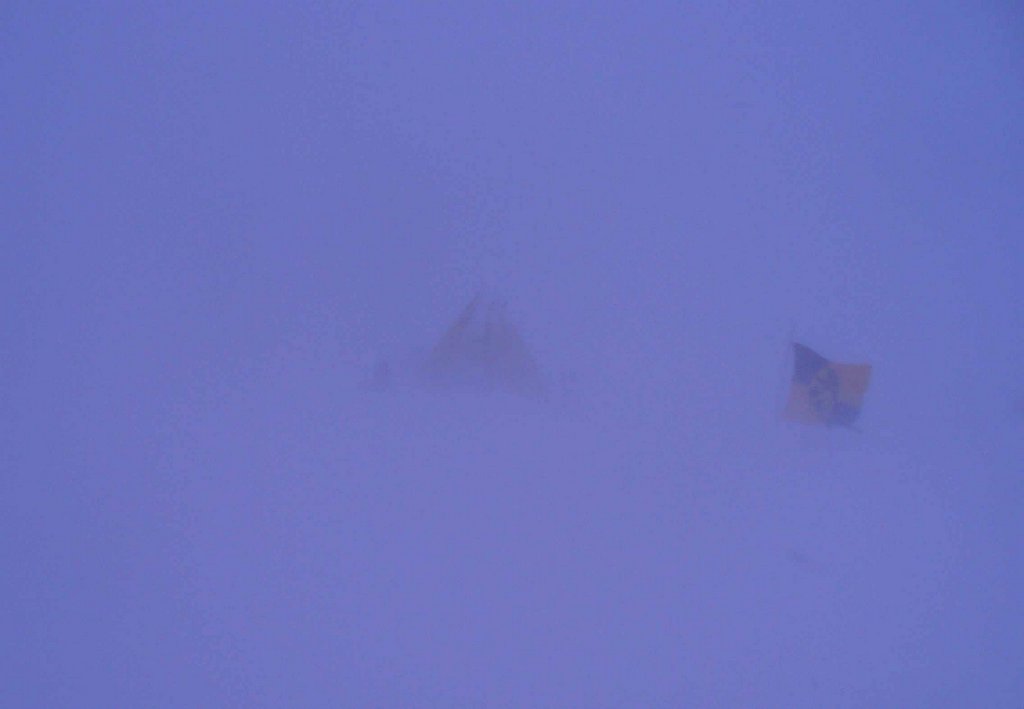The Katabatic Wind
The interior of Antarctic is cold. It is the coldest place on Earth if you discount regions in the upper atmosphere at 80 kilometer altitudes. The interior is at high altitude, varying from 8000 to 10000 feet. However, near the Antarctic coast, the temperatures are moderated by the ocean and although cold by human standards, are considerably warmer. This situation creates cold dense air up hill from warmer less dense air. Cold air, rolling down hill under the affects of gravity, creates the Katabatic Winds. In the Antarctic winter, these winds have been clocked at an 80 kilometers per hour (50 miles per hour) for weeks at a time, with gusts over 200 kilometers per hour (124 miles per hour). These are velocities approaching the take off speed for airplanes. These winds, blowing continuously at hurricane strength, tear at the Antarctic countryside like a tide without the sea.

Windy day in camp where our Scott tent is slowly becoming buried in sastrugi (see later essay on Antarctic Snow).
The summertime katabatic winds are gentle by comparison, hovering between 30 to 60 kilometers per hour (20 to 37 miles per hour). There is always the gusty exception. They are an ever present companion, blowing for better or worse, 24 hours a day. Perhaps one day every three weeks there would be a few hours of calm. Our Scott tents, patterned from Robert Scott’s double walled tent from his 1910 era Antarctic expeditions, are said to be able to withstand 200 kilometer per hour winds. Like the big bad wolf, the Katabatics howl at your door, continuously shaking your tent. You pray that your house is not made of straw.

Katabatic winds depositing snow around our Nansen sledge and sno-mo.
High wind enhances the rate of heat loss due to convection, and is enhanced for humans with exposed skin due to both convection and evaporation. This increase in heat loss is equated to an equivalent lower temperature (without wind) and is referred to as wind chill. For our summertime camp, the temperatures were hovering around -20 degrees Centigrade (-5 Fahrenheit). However, with the ever present katabatic winds, we experience a wind chill or heat rate loss equivalent to no-wind temperatures of -38 to -44 degrees. At these temperatures, it does not matter what scale you use. Minus 40 degrees holds a special significance in that it is the same point on the temperature scale of both Centigrade and Fahrenheit.

A cresent barchan dune, typically made of wind blown desert sand but here it is made of 20 millimeter diameter rocks blown by the katabatic winds. These cresent shaped rock dunes were good places to find meteorites.
Bare skin does not like to be exposed to these low of temperatures. If left exposed, your cheeks will sting at least for a few minutes until such sensations stop. You have to determine if they warmed up and are now happy or continued to chill and are now numb. Either case feels the same. If they are numb, you are only minutes away from frostbite. Vigilance is needed on a minute by minute basis, paying attention to hands, feet, and face to prevent tissue from being frozen. The Katabatics are like Medusa; a brief glance will turn bare skin into white stone.

Near white-out condition in camp driven by the Katabatic wind.